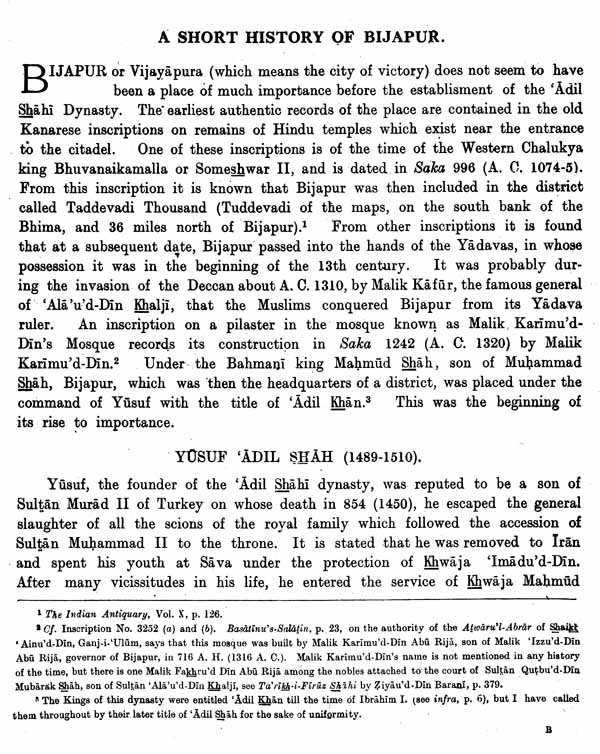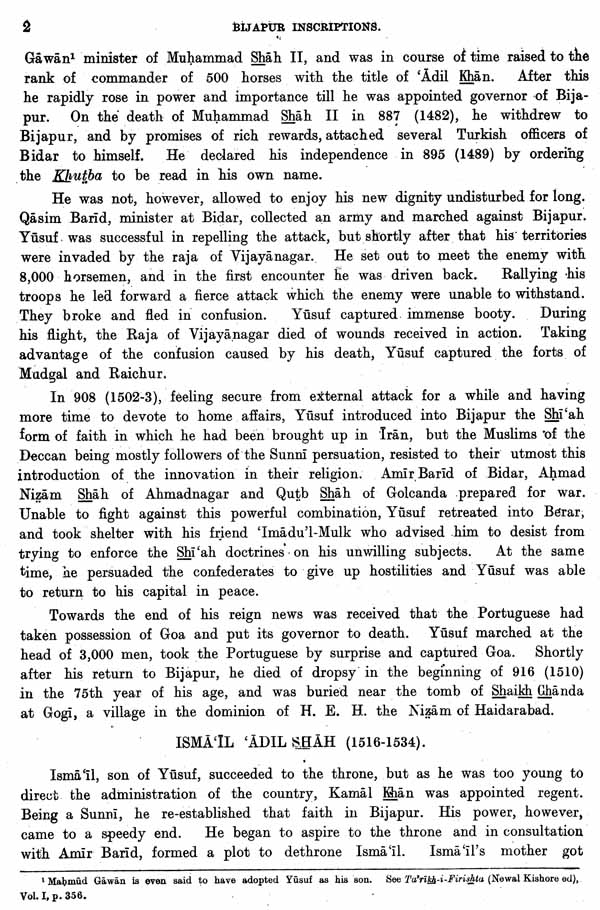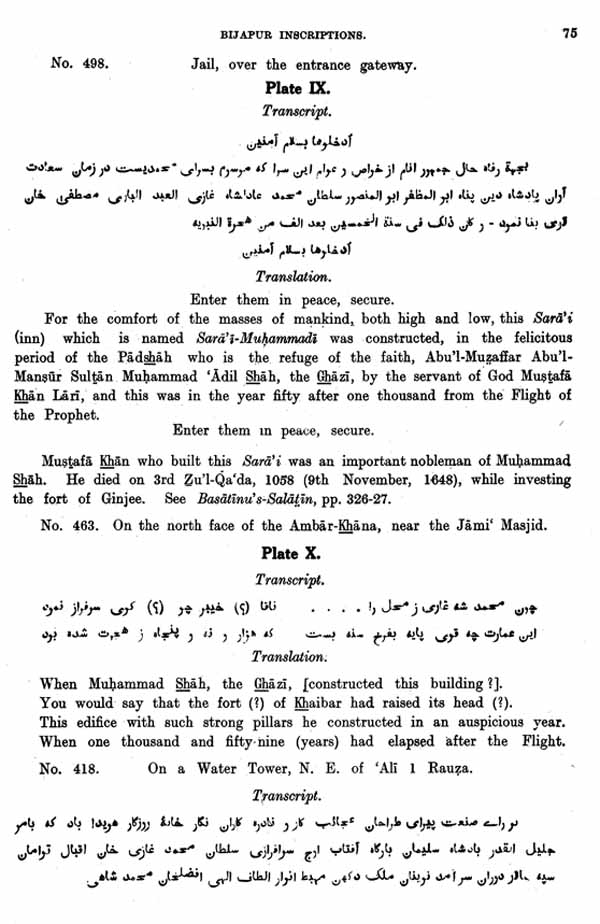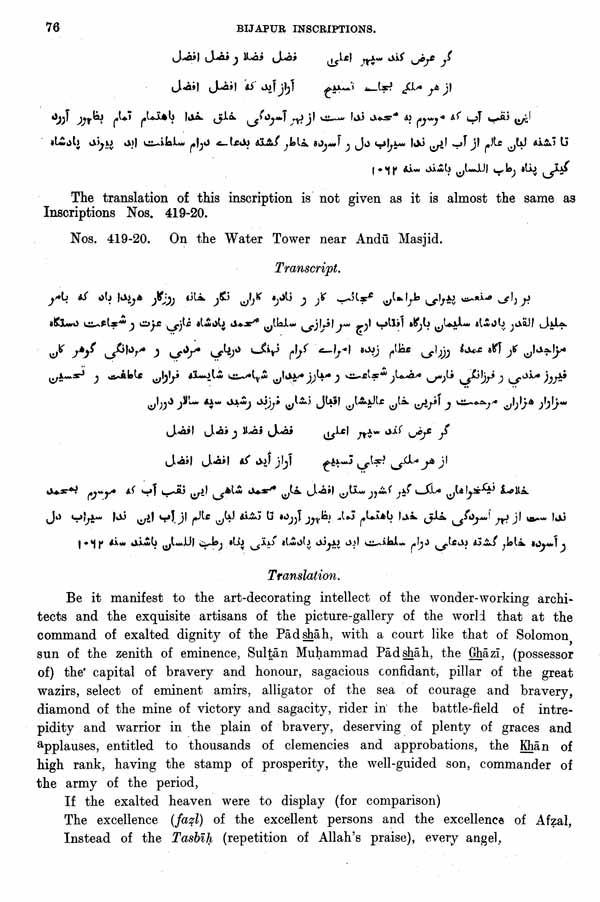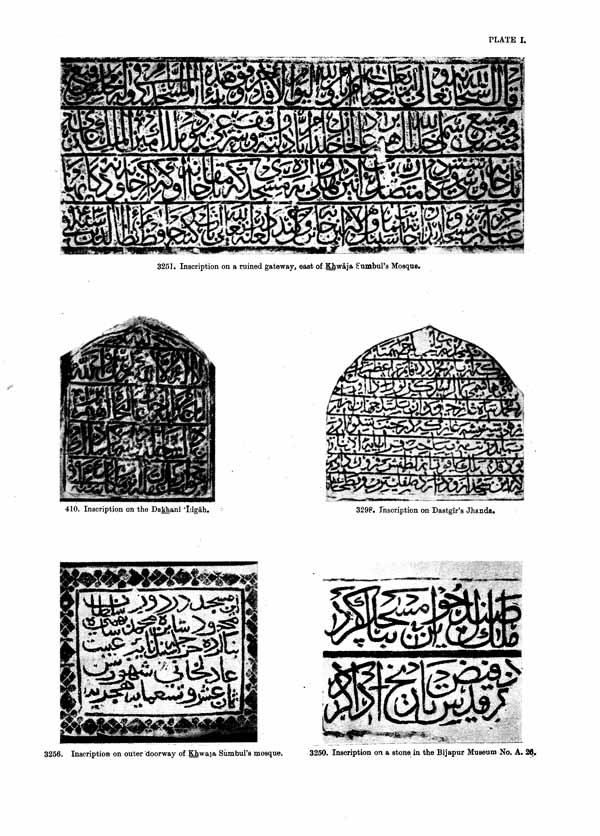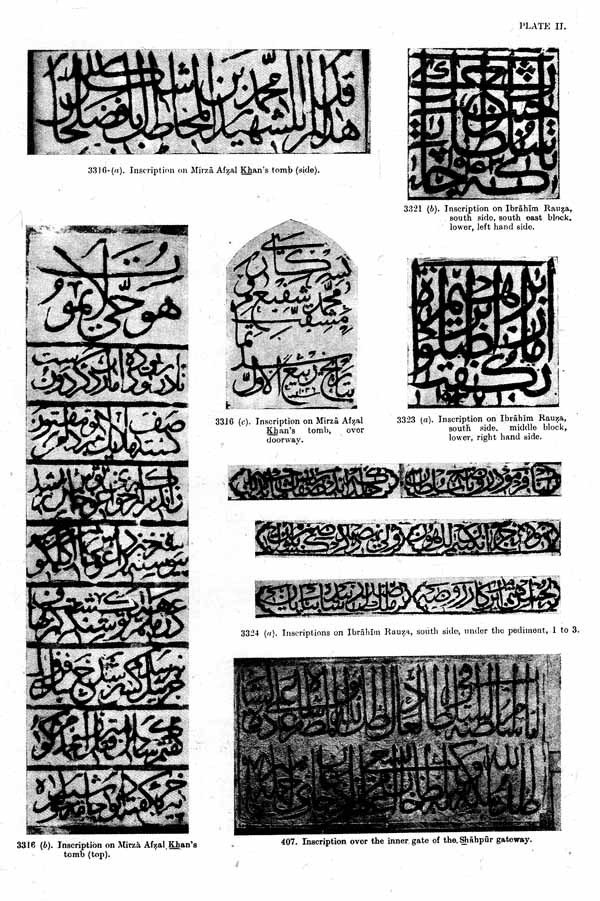
Bijapur Inscriptions- Memoirs of The Archaeological Survey of India
Book Specification
| Item Code: | NAX437 |
| Author: | M. Nazim |
| Publisher: | ARCHAEOLOGICAL SURVEY OF INDIA |
| Language: | Urdu Text with English Translation |
| Edition: | 1999 |
| Pages: | 120 (10 B/W Illustrations) |
| Cover: | HARDCOVER |
| Other Details | 11.00 X 8.50 inch |
| Weight | 660 gm |
Book Description
There are two works. which give some account of the Muslim inscriptions at Bijapur, one in English entitled " Notes on the Buildings and Other Antiquarian Remains at Bijapur " by Mr. H. Cousens, formerly Superintendent, Archaeological Survey, Western Circle, and the other in Urdu named " Waqi`at-i-Mamlukat-i-Bijapur " by Maulavi Bashiru'd-Din Ahmad. Mr. Cousens' work which originally formed part of the Progress Report of the Archaeological Survey in Bijapur during the months of February and March, 1889 was published in the form of a Selection from the Records of the Government of Bombay in 1890. It deals chiefly with the history and architecture of Bijapur. Some of the inscriptions have been dealt with along with the account of the buildings in the city, and the rest are included in Appendix A. Mr. Cousens' description of the monuments at Bijapur is very well Written, but the rest of his work relating to the history of Bijapur and the reading and interpretation of the Inscriptions, leaves much to be desired, as he had to depend on others. It can be said without exaggeration that there is not a single inscription which has been correctly transcribed or translated. Maulavi Bashiru’d-Din Atimad's work, as its name implies, is a history of Bijapur, but in Part II the author has given an account of the ancient buildings at. Bijapur together with his own reading of the inscriptions on them. His work contains numerous mistakes and wrong statements.
The present work was undertaken to supply the deficiency in Mr. Cousens' " Notes " , and to furnish an authentic record of the Muslim Inscriptions at Bijapur. The first section gives a brief account of the kings of Bijapur which is intended to serve as an historical background for the study of the inscriptions. It is based on the Ta`rikh-i-Firi shta, the Basatinu's-Salatin by Mirza Ibrahim Zubairi, and the accounts of the 'Adil Shahi Sultans in the Mughal histories like the Ma’athiru'l-Umara, and the Muntakhabu’l-Lubab. The second section deals with the architecture of Bijapur and is, with a few alteration and omissions, a reproduction of Mr. Cousens' inimitable note on that subject. I have not given a description of the buildings at Bijapur as this work has already been done by Mr. H. Cousens in his " Notes " as well as in his larger Monograph on Bijapur Architecture. The third and the main section comprises the inscriptions at Bijapur which have been arranged chronologically under separate heads to facilitate reference. After the Mughals, the 'Adil Shahi Sultans were perhaps the greatest , builders among the Muslim rulers of India. Some of the most beautiful, artistic and majestic buildings in India like the Ibrahim Rauza, the Mihtari Mahal and the Gol Gumbad, were built under their order or patronage. At Bijapur proper there are hundreds of mosques, tombs palaces, etc., which bear testimony to the love of architecture cherished by the Sultans of Bijapur. Most of these buildings bear inscriptions, but, in the present work, I have included only those which are valuable from an historical or literary point of view, and have omitted those which consist either of verses from the holy Quran or prayers for the soul of the departed.
I have followed the Indian Ephemeris by Diwan Bahadur L. D. Swami kannu, for giving 'corresponding Hijra and Christian dates. The translation of the verses from the Quran is that of Maulana Muhammad 'Ali (The Holy Quran, The Islamic Review Office, England, 1917).
I am greatly indebted to Mr. G. Yazdani, Epigraphist to the Government of India for Persian and Arabic Inscriptions, for general advice, and to Mr. K. N. Dikshit, Deputy Director General of Archaeology in India, for having read, translated and corrected for me the inscriptions in Mahratti, and. I thank Mr. Sahib Lal Bangi of Bijapur for lending to me his manuscript containing the text of Bijapur inscriptions as read about 70 years ago by one of his ancestors.
**Contents and Sample Pages**

